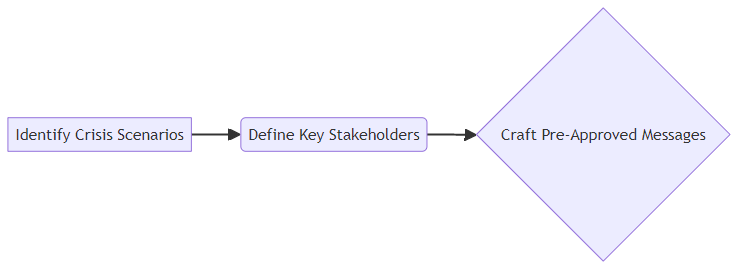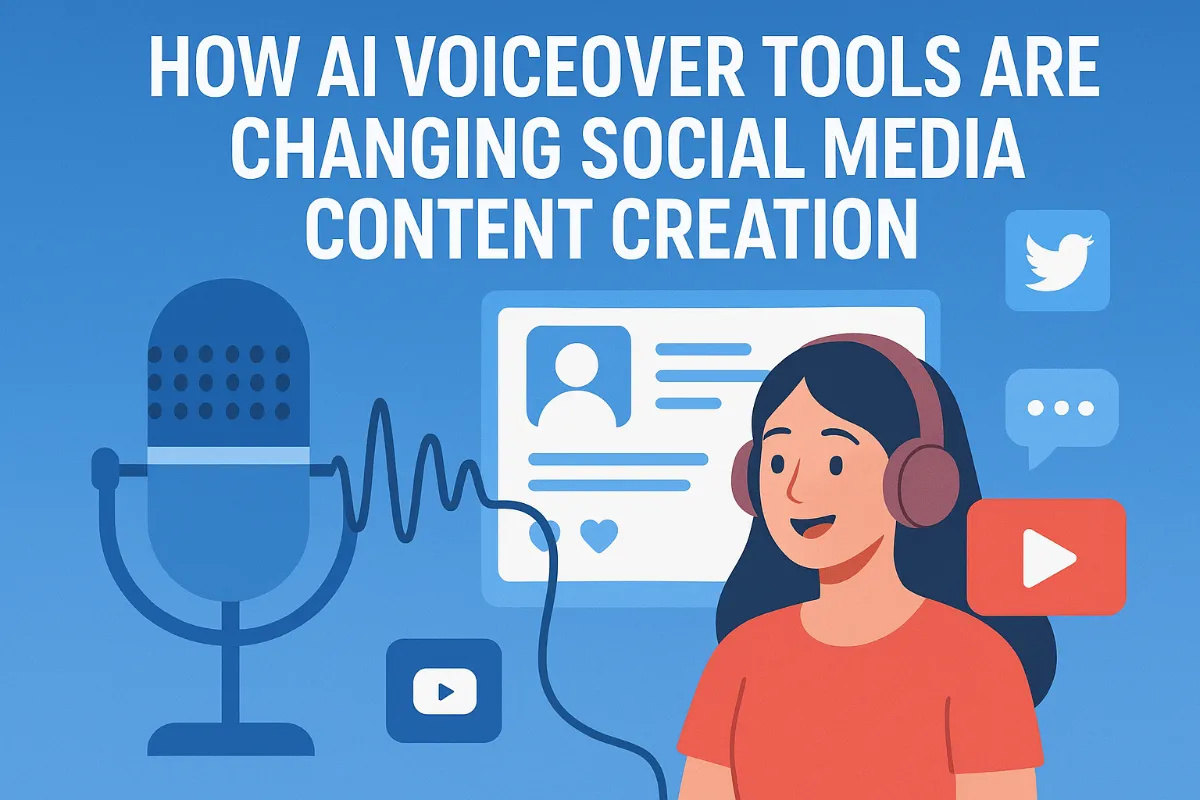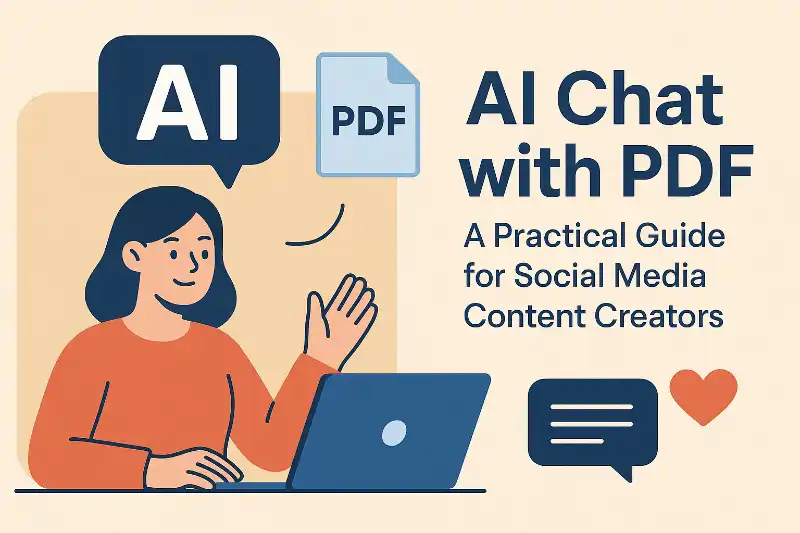AI-Powered Crisis Communication Planning: A Content Creator's Lifesaver
The Evolving Landscape of Crisis Communication
Is your crisis communication plan ready for a world where news travels faster than ever? The way we handle crises has changed dramatically, and content creators need to stay ahead of the curve.
Social media has turned crisis communication on its head. What used to take days to become a full-blown crisis can now explode in minutes.
- Immediate Response: Social media demands that you respond quickly. (Why Fast Replies Matter on Social Media - NexGen Agency Inc) A delayed response can make you appear indifferent or, worse, like you're trying to hide something. (How might someone interpret a delayed response to a text ...) The need for agile and transparent responses is highlighted by resources like "Leveraging AI to Supercharge Crisis Communications Planning," which emphasizes how ai can help us be more nimble and open when things go wrong.
- Misinformation Control: False information spreads like wildfire online. (Misinformation Spreads Like Wildfire Online While LA ...) You need to actively monitor social channels and correct misinformation to protect your reputation.
- Agility and Transparency: Being able to adapt your message and communicate honestly are key to managing the online narrative.
We now live in a time of "perma-crisis," where potential crises are always on the horizon. Constant monitoring and preparedness are now essential.
- Ongoing Preparedness: The constant potential for crises means you can't afford to relax. You must always be ready to respond.
- Social and Geopolitical Complexity: Social movements and global events add layers of complexity to crisis management.
- Traditional Strategies Fall Short: Traditional crisis communication plans often aren't enough to handle today's challenges.
Content creators are in the spotlight, making them vulnerable to public scrutiny. A misstep can seriously damage your brand.
- High Visibility: As a content creator, you're a public figure. Your actions and words are always subject to judgment.
- Reputational Risk: A single mistake can lead to a significant loss of credibility and followers.
- Effective Response: Without a plan, your response may be slow and ineffective, making the situation worse.
Understanding this evolving landscape is the first step in building a crisis communication plan that works. Next, we'll look at how ai can be a game-changer in this new environment.
How AI Supercharges Crisis Communication Planning
Did you know that ai can now predict potential PR crises before they even happen? It's like having a crystal ball for your brand's reputation, and it's changing how content creators plan their crisis communication.
Ai tools can significantly streamline content creation, especially when time is of the essence. For example, Social9 offers ai-powered tools that help generate engaging social media content. These tools can help content creators produce posts, captions, and hashtags designed to boost engagement, saving valuable time and resources. Smart captions and content templates make it easier to adapt your message quickly.
One of the most powerful applications of ai is its ability to monitor social media and identify shifts in brand sentiment. Predictive ai tools patrol online platforms, looking for changes that could signal an impending crisis. This early warning system allows for proactive response strategies, helping you address issues before they escalate. Data-driven insights enable informed decisions and timely interventions.
Ai excels at automating repetitive tasks, freeing up content creators to focus on strategic thinking and creative problem-solving. Ai can handle media monitoring, sentiment analysis, and reporting, reducing the risk of burnout. Instead of spending hours on these tasks, you can delegate them to ai assistants.
Beta testers of Précis PR, an industry-specific ai platform, reported saving an average of 8.5 hours per week on content creation tasks.
Ai tools can act as a force multiplier, enabling strapped communications teams to boost productivity and focus on what matters most, according to one article.
By automating these tasks, ai ensures that content creators can concentrate on crafting thoughtful, strategic responses to crises. This not only improves the quality of your crisis communication but also enhances your overall efficiency.
As you can see, ai is becoming an indispensable tool for managing crises. Now that we understand how ai can supercharge our planning, let's explore some of the key tools available to content creators.
Key AI Tools for Crisis Communication
Ai isn't just about automating tasks; it's about giving you superpowers in a crisis. Let's explore some ai tools that can be a content creator's lifesaver during turbulent times.
These tools monitor brand mentions and analyze public sentiment in real-time. By understanding how the public feels, you can tailor your messaging for maximum impact.
- Meltwater, Cision, and Prowly are examples of sentiment analysis tools. These tools help you keep a finger on the pulse of public opinion.
- They identify key concerns. This allows you to address negative feedback promptly and effectively.
- For instance, if a product recall sparks online criticism, these tools can pinpoint the exact issues customers are discussing, enabling you to craft targeted responses.
Need to draft a statement quickly? Content generation tools can help.
- ChatGPT, Google Gemini, and Social9 can generate templates, outlines, and initial drafts of crisis communications. These tools can save you precious time when every minute counts.
- They help you adapt messaging quickly for different platforms and audiences. This ensures your message resonates across all channels.
- For example, if a data breach occurs, these tools can help you draft initial press releases and social media updates, leaving you to focus on the specifics.
Knowing who to reach out to is half the battle. Media monitoring tools can help you identify the right journalists and influencers during a crisis.
- Ottogrid and Dazzle can build targeted media lists in minutes. This ensures your message reaches the right people. Dazzle, for instance, is a platform that helps you discover and connect with relevant media contacts and influencers.
- They identify relevant journalists and influencers to contact. This streamlines your outreach process.
- For instance, Ottogrid can quickly find journalists at top-tier business press outlets who cover ai startups, ensuring your message reaches the right audience. Ottogrid helps you build targeted media lists in minutes.
According to The Role of AI in Crisis Communications - Précis AI, beta testers of Précis PR saved an average of 8.5 hours per week on content creation tasks.
These ai tools are not just about speed; they're about making informed decisions and staying ahead of the curve. Now that we understand how ai can help with risk assessment and vulnerability analysis, let's explore how to build a more robust plan.
Building an AI-Enhanced Crisis Communication Plan
Crises rarely announce themselves, so being prepared is half the battle. Let's walk through how to build an ai-enhanced crisis communication plan that keeps you ready.
Begin by brainstorming potential crises specific to your content and audience. What could go wrong? Ai can assist here by analyzing past incidents in your industry or similar fields to suggest potential risks you might not have considered. It can also help identify vulnerabilities by scanning your existing content and online presence for potential triggers or sensitive topics.
- Consider scenarios like the spread of misinformation, offensive or insensitive content, data breaches, or any action that could damage your reputation.
- For example, a healthcare content creator might face a crisis due to inaccurate medical advice, while a retail content creator could encounter issues related to product quality or ethical sourcing.
- Prioritize these scenarios based on their potential impact and likelihood. Ai can help by analyzing vast datasets to predict which scenarios are most probable and would have the most significant negative impact.
Next, identify the individuals and groups most affected by a potential crisis. Who needs to know what, and when? Ai can help by analyzing your audience data to identify key stakeholder groups and their communication preferences. It can also map out communication flows, suggesting who should be informed first and how.
- Your key stakeholders might include your audience, followers, partners, employees, and the general public.
- For instance, a finance content creator needs to consider investors and regulatory bodies, while a gaming content creator must think about their player community and game developers.
- Develop tailored communication strategies for each stakeholder group. What works for your followers might not work for investors. Ai can help by suggesting specific messaging angles and channels for each group based on their likely concerns and information needs.
Finally, develop pre-approved statements and templates for common crisis scenarios. This saves time and ensures consistency. Ai can be invaluable in generating these templates, offering variations for different platforms and tones. It can also help brainstorm potential talking points and FAQs.
- Create templates for press releases, social media posts, email communications, and website updates. This ensures you can respond quickly and consistently across all channels.
- For example, a technology content creator might draft templates for data breach announcements, while a food content creator could prepare statements for product recalls.
- Ensure all messaging aligns with your brand voice and values. Ai can be trained on your brand's existing content to help maintain that consistent voice and tone in crisis communications.

By preparing these elements in advance, you'll be better equipped to handle any crisis that comes your way. Next, we'll explore how to set up monitoring and alert systems to detect crises early.
The Human Element: Why AI Isn't a Replacement
Can ai truly replace the human touch in crisis communication? While ai offers speed and efficiency, empathy and authenticity remain irreplaceable.
Ai can generate content, but it can't replicate genuine empathy. During a crisis, people want to know that you understand their concerns and feelings. A generic, ai-generated response might come across as cold and insincere. However, ai can support human empathy by providing data-driven insights into audience emotions. For example, sentiment analysis tools can flag widespread feelings of frustration or fear, allowing human communicators to acknowledge and address these emotions more directly. Ai can also suggest empathetic phrasing based on successful past communications.
- Imagine a major product recall. An ai could quickly draft an apology, but a human communicator can add details that show true understanding of the inconvenience and potential anxiety caused to customers.
- For example, a healthcare provider facing a data breach needs to communicate with patients. While ai can draft the initial notification, a human touch is essential to convey genuine concern for patient privacy and offer personalized support.
Authenticity is crucial for building trust during a crisis. Audiences can often tell when a message lacks genuine emotion or concern. Human communicators can tailor their responses to reflect the specific values and tone of their brand, creating a more authentic connection.
Ensure your responses are genuine and address the emotional impact of the situation. A financial institution responding to allegations of fraud should not only provide factual updates but also express empathy for the affected investors and outline concrete steps to prevent future occurrences.
Be transparent about using ai in crisis communication. Hiding the fact that ai is involved can erode trust if discovered.
Avoid using ai to spread misinformation or manipulate public opinion. Always prioritize ethical decision-making and responsible communication practices. For instance, using ai to generate fake testimonials or suppress negative feedback is unethical and can severely damage your reputation.
Always review and edit ai-generated content before publishing. While ai can create drafts quickly, it may not always capture the nuances of a situation or the specific tone required.
Ensure messaging is accurate, sensitive, and appropriate. A global company needs human oversight to ensure that ai-generated content is culturally sensitive and adapted for local audiences.
Human judgment is necessary to navigate complex and nuanced situations. Imagine a situation where a company faces accusations of discrimination. Ai can analyze sentiment and draft responses, but human judgment is essential to address the specific concerns of affected parties and ensure that the response aligns with the company's values.

Ai is a powerful tool, but it's not a replacement for human insight and ethical judgment. Next, we'll explore how to ensure your crisis communication plan complies with legal and regulatory requirements.
Simulating Crisis Scenarios: Testing Your Plan
Want to know if your crisis communication plan will hold up when things get real? Simulating crisis scenarios is how you pressure-test your plan and identify any weak spots before they become major problems.
Conducting regular tabletop exercises is a great way to simulate crisis scenarios. These exercises involve bringing together key stakeholders to walk through potential crisis situations and discuss how they would respond.
- A scenario for a retail content creator might involve a product recall due to safety concerns. The team would discuss how to manage communication with customers, handle social media inquiries, and coordinate with regulatory agencies.
- For a finance content creator, a scenario could be a sudden market downturn affecting investment advice. The team would strategize on how to inform followers, address concerns, and provide responsible guidance.
- These exercises help identify gaps in your plan and ensure everyone understands their roles and responsibilities.
Social media simulations take your testing a step further by mimicking real-time online conversations. Use social media simulation tools to test your response strategies in a controlled environment.
- Monitor the simulated conversation and analyze public sentiment. This allows you to see how your messages resonate and identify potential areas of misinterpretation.
- For instance, a healthcare content creator could simulate a scenario where inaccurate medical advice goes viral. By monitoring the simulated conversation, they can assess the effectiveness of their correction strategy.
- A gaming content creator might simulate a controversy over in-game content. Monitoring the simulated reactions helps refine messaging and communication channels.
One of the best ways to prepare for future crises is to learn from the past. Analyze past crises in your industry to identify key lessons.
- For example, a technology content creator could study how other tech companies handled data breaches. They can adapt their plan based on the successes and failures of others.
- A food content creator might analyze how brands responded to contamination scares. This can inform their own strategies for product recalls and safety communication.
- Continuously improve your crisis communication strategies over time by incorporating these lessons.
As one article highlighted, ai tools can modernize tabletop exercises, fully measuring and developing organizational crisis readiness.
By simulating crisis scenarios and learning from past events, you can build a more robust and effective crisis communication plan. Now, let's look at the future of ai in crisis communication.
The Future of AI in Crisis Communication
The future of crisis communication is rapidly evolving, driven by advances in ai. What can content creators expect in the years to come?
Agentic AI represents a significant leap forward. It operates independently to achieve specific goals, automating complex tasks and making decisions without human intervention.
- Imagine ai-powered media monitoring systems that not only detect potential crises but also autonomously draft and deploy initial responses. This ensures rapid and consistent communication.
- For example, in the event of a widespread product recall, Agentic ai could identify affected customers, generate personalized email notifications, and manage social media inquiries, freeing up human teams to handle more complex issues.
- As noted earlier, "Leveraging AI to Supercharge Crisis Communications Planning" highlighted Agentic ai's ability to modernize tabletop exercises, fully measuring and developing organizational crisis readiness.
Ai will enable highly personalized crisis communication strategies. This involves tailoring messaging to individual stakeholders based on their specific needs and concerns.
- For instance, during a data breach, ai could segment affected users based on the type of data compromised and provide customized guidance on how to protect themselves.
- Consider a scenario where a social media influencer faces backlash for a controversial post. Ai could analyze audience sentiment and generate personalized responses that address specific concerns, improving engagement.
- This level of personalization improves engagement and builds stronger relationships during times of crisis.
Ai will continuously analyze data and provide insights for improving crisis communication strategies. This allows you to adapt your plan based on real-time feedback and evolving public sentiment.
- For example, ai could track the effectiveness of different messaging approaches and recommend adjustments to improve resonance with target audiences.
- Imagine a scenario where a company faces ongoing criticism for its environmental practices. Ai could analyze public sentiment and suggest concrete actions to address these concerns, helping the company rebuild trust.
- By staying ahead of the curve and being prepared for any crisis that may arise, you can enhance your brand's resilience and public perception.
In conclusion, ai is set to revolutionize crisis communication, offering unprecedented capabilities for content creators. By embracing these advancements, you can build more resilient and effective crisis communication plans.
Key Takeaways:
- The crisis communication landscape is faster and more complex than ever, demanding agility and transparency.
- Ai offers powerful tools for proactive planning, rapid response, and efficient management of crises.
- While ai is a game-changer, human empathy, authenticity, and ethical judgment remain essential.
- Regular simulation and testing are crucial for a robust crisis communication plan.
What's next for you? Start exploring ai tools that can support your crisis communication efforts. Begin by identifying potential risks and stakeholders, and then build out your plan with ai-assisted insights and templates. Remember to always prioritize human connection and ethical communication.





